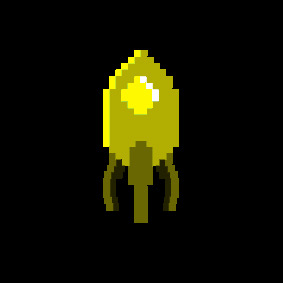Habt alle eine schöne letzte Nacht in der rC3-Welt! Viel Spaß beim Erkunden der Maps, die Ihr noch nicht kennt. Denkt dran, Eure Badges zu exportieren (im Profil). 😉 Kommt gut ins neue Jahr – hoffentlich wird es für uns alle besser und flauschiger als das letzte. // Have a great last night at the rC3-2d-world, you all! Enjoy exploring the maps you don't already know. Remember to export your badges (in your profile). 😉 You all have a happy new year! May it be better and "fluffyer" than the last one.

Collaboration of PaparazziUAV and previous-years Assembly 'Multicopter-FPV' Paparazzi UAV (Unmanned Aerial Vehicle) is an open-source drone hardware and software project encompassing autopilot systems for multicopters/multirotors, fixedwing, helicopters and hybrid aircraft. Paparazzi, being open, enables users to add more features and improve the system. Using and improving Paparazzi is encouraged by the community.
'Multicopter-FPV' is a group of hobbyists from all over europe. We construct/build/program our multicopters (a.k.a. "drones") and follow the priciple "build-fly-crash-repeat".
Paparazzi UAV (Unmanned Aerial Vehicle) is an open-source drone hardware and software project encompassing autopilot systems for multicopters/multirotors, fixedwing, helicopters and hybrid aircraft. Paparazzi, being open, enables users to add more features and improve the system. Using and improving Paparazzi is encouraged by the community.
The project includes source-code for the avionics and the ground station computers as well as the hardware designs for many parts of the avionics system. Paparazzi’s avionics software is designed with portability in mind. Allowing for the use of the Paparazzi UAV system on many varied hardware platforms. The ground station computer software is written in statically typed functional language assuring reliability and stability of the system.
Unlike other systems, Paparazzi UAV was designed with autonomous flight as the primary focus and manual flying as the secondary. From the beginning it was designed to be able to control multiple aircraft within the same system. Paparazzi features a dynamic flight plan system that is defined by mission states and using way points as “variables”. This makes it easy to create very complex fully automated missions without the operators intervention.
Since its founding in 2003, Universities and civilian teams have employed Paparazzi to win top marks in high profile airborne robotics competitions around the world; thereby, proving the flexibility, durability and advanced features embedded in the Paparazzi framework. Many of these top marks and achievements have been documented on our blog.
Several core developers to the project are affiliated with universities and research institutions. These include, ENAC University of Toulouse, France, MAVlab of TU-Delft in the Netherlands and AggieAir of Utah State University in the United States.
Several vendors are currently producing and selling Paparazzi autopilots and popular accessories, making the system easy and affordable for everyone. Some of the companies were founded by core developers of the Paparazzi UAV project as a way to provided well tested and integrated hardware to the Paparazzi community. For example, 1BitSquared is developing avionics hardware and providing consulting services for system integration, software development as well as custom nano UAV hardware development.
Paparazzi can be used for many applications from the emerging personal UAV market to advanced hobbyists, as well as University and civilian research programs and competitions. It is also being used in the field in daily operations, for example, SUMO is being used by meteorological researchers as reusable weather balloons for collecting data in the Antarctic. The multitude of applications for Paparazzi are endless, so join the community and contribute to the project with your innovative ideas.
assembly rooms
assembly events
No entries available.
assembly badges
Self-organized Sessions
No entries available.
Tags
no tags availaible

